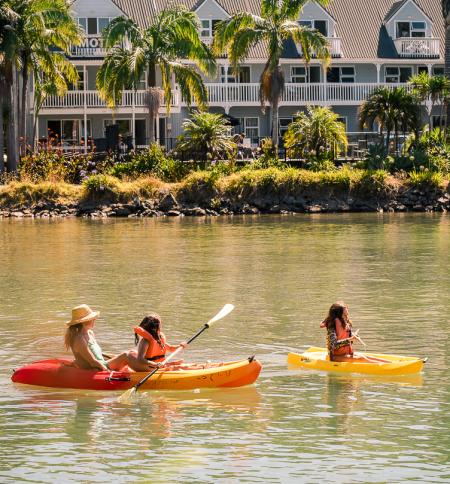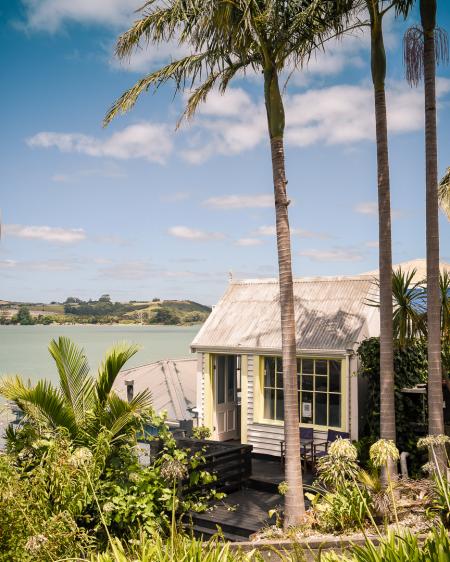This may be the ultimate way to reach a winery. Grab wallet, sunscreen and one double kayak, then paddle 15 minutes across Mangōnui Harbour to the northern tip of Paewhenua Island.
Beach the boat and stroll a few metres uphill to Dancing Petrel Vineyard’s waterfront tasting room, which faces historic Mangōnui township and the entrance to Doubtless Bay. Visits are by appointment only and owner Kim Gilkison admits most would be customers arrive by road; the island is actually a peninsula, connected to SH10 on Northland’s eastern coast. However, the kayaking option is vastly more fun.
We sample eight wines and leave with broad grins and a bottle of oaked viognier tucked into the bottom of our kayak. Somehow, the return paddle seems considerably easier with all those tastings under our belts.



